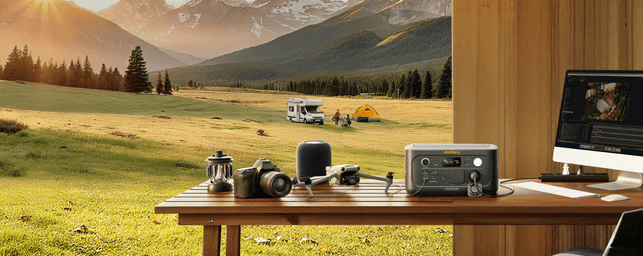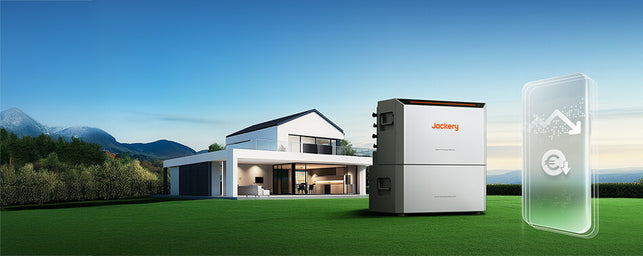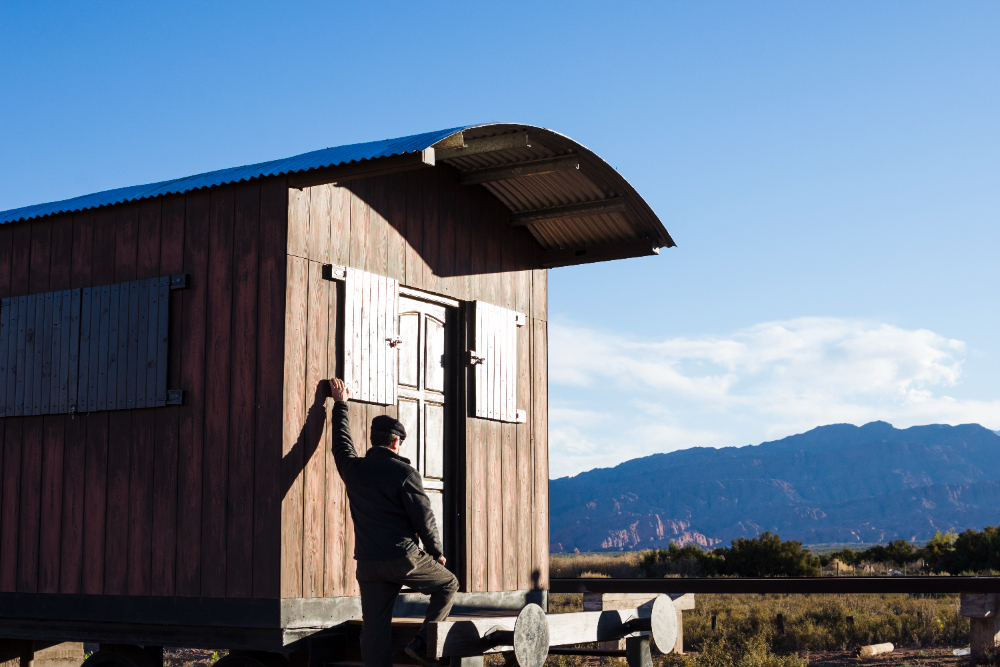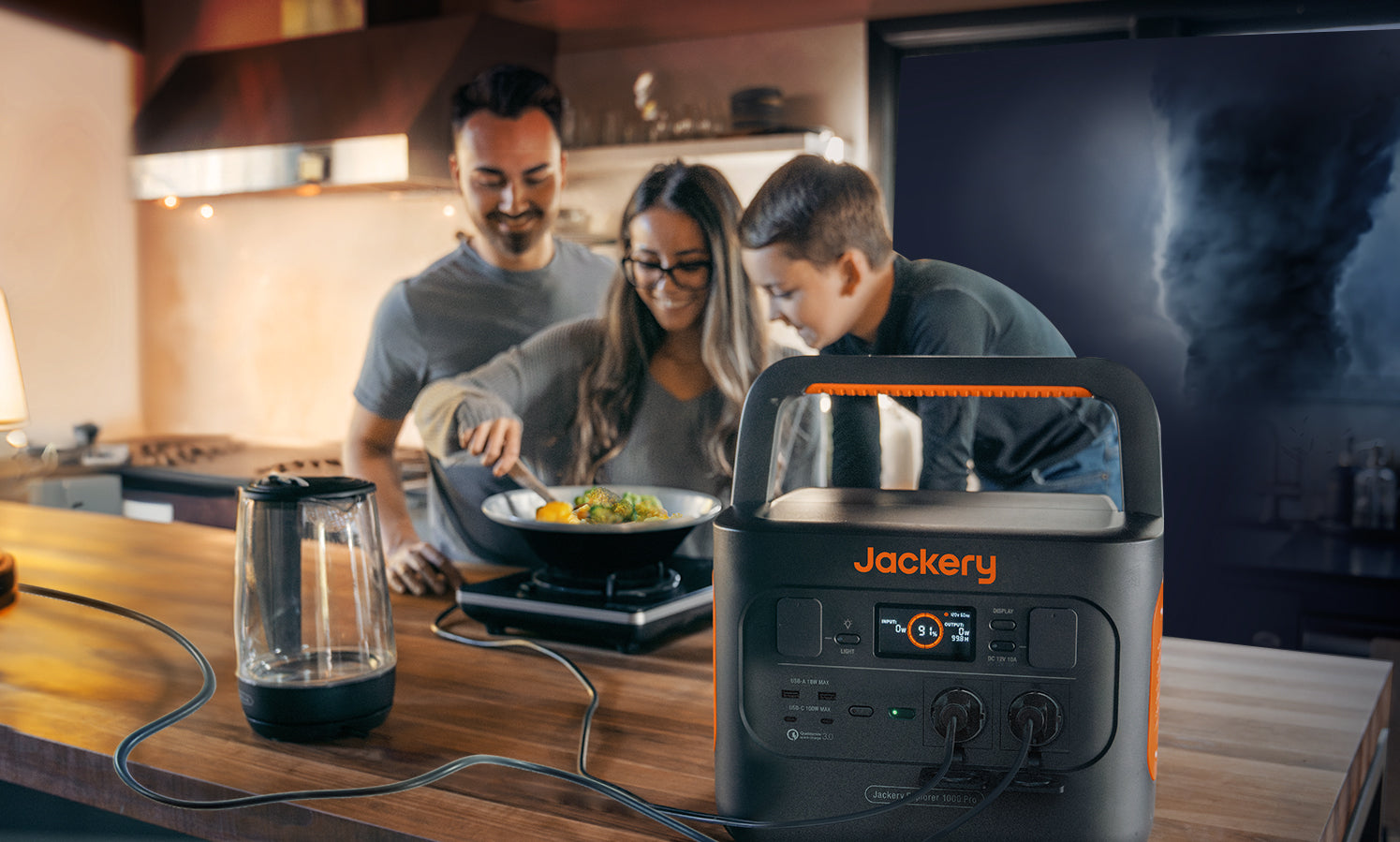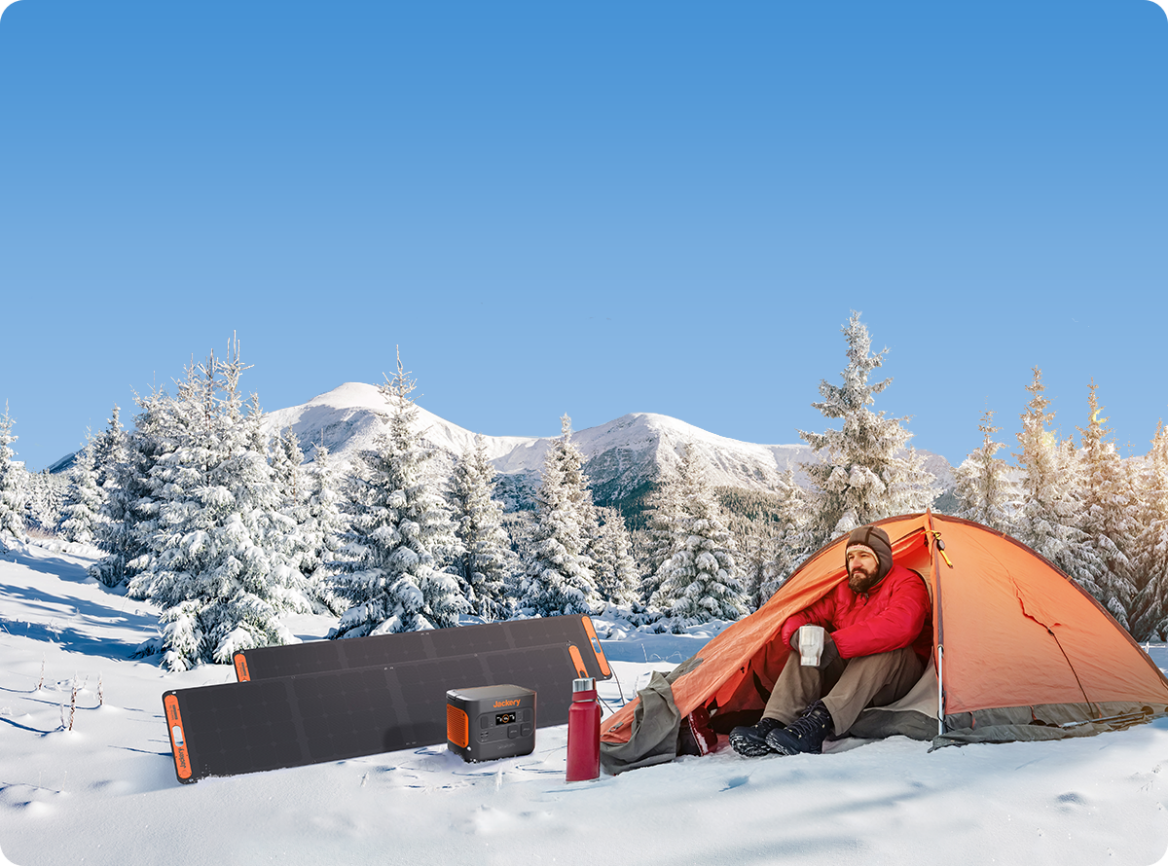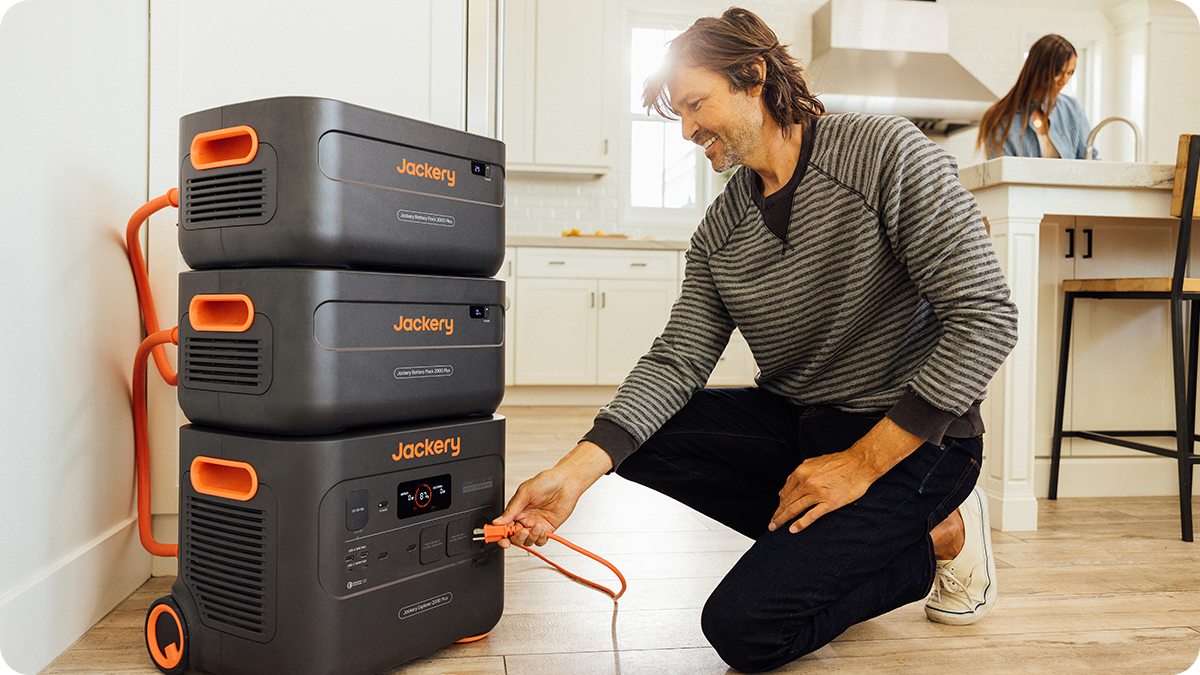Permanent Wiring
A permanent wiring setup draws electricity directly from an established utility line. This method involves a dedicated underground cable that links the cabin to the broader power grid.
In order to install permanent wiring, you first need to get the necessary permits based on where you live. After that, you need to hire a professional electrician who will determine the safest and most efficient approach to lay the underground wiring. You will also need to dig a trench that is deep enough to protect the conduit from accidental damage. The area is then backfilled and levelled. After the physical line is in place, the electrician will carefully install indoor outlets, switches, and panels.
Pros
Connecting your cabin permanently with the grid will allow you to get reliable and stable electricity. As long as you have grid power, you can keep on powering any appliance you want. On top of this, a permanent connection with the grid provides you with long-term power since you do not need to refuel the generator every time you need electricity.
Cons
However, using permanent wiring comes with some disadvantages. For instance, the upfront installation cost of the whole setup can be quite high. Similarly, the installation is fairly complex and invasive, which requires you to hire professional services and spend a good amount of time to bring power to your cabin. Furthermore, safety issues can arise if unqualified people try to install the wiring. Additional infrastructure, such as separate meters, is also needed which will take the price of the project significantly up.

Copyright image from https://www.freepik.com/free-photo/full-shot-happy-kid-posing-near-balustrade_5751180.htm
Fixed Solar Panel System
Fixed solar systems can also be used to run any electrical appliance in your cabin. These systems are usually mounted on a roof, where solar panels capture electricity during daylight hours and store it in batteries that you can use throughout the day.
The process of setting up a fixed solar panel system involves careful planning and a few key components. Technicians start by evaluating the cabin’s location to identify a suitable spot that receives enough direct sunlight. Apart from solar panels, you also need to install inverters and batteries at safe locations to operate these systems.
Pros
Solar panels draw energy from sunlight, which is a free and renewable resource. This means that you generate eco-friendly electricity that helps you to save a large amount of money in the long run. Maintenance of these solar systems is also minimal, as you only need to keep the panels free from any dust or debris that may accumulate on them over time.
Cons
While solar systems come with numerous advantages, they also have some downsides, such as high capital costs that may deter many people from using them. Similarly, they are dependent on weather conditions and work best when the sun is out at its peak. Similarly, fixed solar systems require a dedicated space, mostly a rooftop, on which you need to install the solar panels.

Copyright image from https://www.freepik.com/free-photo/yellow-cottage-with-solar-panels-sits-overcast-sky_225719021.htm
Traditional Fuel-Based Generator
Traditional generator is also a commonly used way to power the cabins. These backup power generators convert fuel into electrical power through an internal combustion engine and offer a simple way to supply electricity at a remote location that does not connect to the public grid.
As fuel-based generators emit hazardous gases, you need to place them outdoors to avoid gas accumulation in closed spaces. Once you place the generator in a safe place outdoors, connect it to your cabin, and it will start powering your appliances. Just make sure that the fuel tanks of these generators are always filled since they will stop generating electricity the moment they run out of fuel.
Pros
One of the major advantages of using traditional generators as a backup power source is their ability to start powering your appliances right after you connect them to your cabin and fuel them. It is essentially a plug-and-play solution, as you do not have to connect it to the grid.
Cons
However, the operational costs of traditional fuel-based generators are high since you require a constant stream of fuel to keep it running. Furthermore, these generators produce noise due to the presence of different moving parts in it. Similarly, you have to bear with the emissions of this generator as it will keep emitting hazardous pollutants in the air, which will also take a toll on the overall environment around you. Also, these generators require frequent maintenance as they contain different movable parts.
Portable Solar Generators
A trendy and most effective way to power your cabin is to use a portable solar generator like those offered by Jackery. Just like the traditional solar systems, they generate electricity through solar energy. However, they are portable and can easily be moved around at your desired location. These systems also contain batteries so that you can store electricity for later use.
Setting up a portable power generator is a straightforward process as you only need to unfold the solar panels and put them at any location that receives an ample amount of sunlight. After that, just connect the panels with the battery systems that will store energy so that you can use it at the time and place of your choice.
Pros
Like fixed solar systems, it operates quietly and does not produce fumes. It also requires minimal maintenance and provides unparalleled flexibility to power any kind of device. However, the greatest advantage of these systems is their portability, as the foldable handle and wheels make them easy to move.
Cons
Solar battery backup systems have limited ability to power high-demand devices, although you can still use them to power energy-intensive devices for a short period of time. Similarly, these backup power solutions are dependent on sunlight, and less-than-ideal sunny conditions will limit your ability to charge the system. Having said that, modern-day portable power generators like those offered by Jackery are highly efficient in generating electricity even when the sunlight conditions are not ideal.

Jackery Portable Solar Generators Recommendation
Jackery’s portable solar generators are famous for their ability to supply clean and dependable energy without the complications of traditional fuel-based units or fixed installations. They adapt well to various environments, handle changing energy demands, and deliver the kind of reliable performance that cabin owners need.
Let's have a look at the top two Jackery solar generators that can be a great addition to your cabin.
1. Jackery Solar Generator 2000 Plus
This Jackery solar generator addresses higher energy requirements with its base capacity of 2 kWh. Despite this high initial capacity, you can still scale the power station up all the way up to 12 kWh in case your cabin’s electricity needs increase.
Furthermore, you can expand this system up to 3000 W of output power, which will allow you to run power-intensive devices. This portable power generator brings unparalleled durability and longevity since the power station comes with a LiFePO4 battery that is famous for its exceptional safety features.
Fast solar charging, combined with advanced technology that optimizes the charging process, allows you to replenish the unit from sunlight in a small amount of time. Using six Jackery SolarSaga 200W Solar Panels, you can recharge this system in only 2 hours. Apart from solar energy, this power station can also be charged through a wall outlet in just 1.7 hours.
The power station has three AC outputs, two USB-A outputs, and two USB-C outputs, which means that you can plug in multiple devices all at once. Both the power station and solar panels are highly portable and can easily be moved around without any trouble.
2. Jackery Solar Generator 1000 v2
This Jakery solar generator introduces a perfect mix of portability, capacity, and ease of use. While this generator is much smaller and lighter than the previous Jackery Solar Generator 1000 version, it still brings an impressive capacity of almost 1070 Wh and a power output of 1500W. This means that you can use this backup power system comfortably for most of your mid-sized cabin electricity needs.
The power station comes with top-notch safety features, such as the ChargeShield2.0 technology that brings in 62 layers of protection. The system operates at less than 22db, which allows you to harness clean and cheap electricity without generating any noise that comes with traditional fuel-based systems.
The quick charging capability of the Jackery Explorer 1000 V2 further increases its appeal. It can be charged quickly in just one hour through its emergency charging mode, while you only need 1.7 hours to charge it fully through a traditional wall outlet. For solar charging, you can connect one Jackery SolarSaga 200W Solar Panel to this battery backup, and it will be fully charged in just 7.5 hours.
Both these backup power generators have the capability of running power-intensive devices that you will ever need in your cabins. They can also act as CPAP battery backup, which means that even patients with sleep-related breathing disorders can stay overnight in their cabins comfortably.

How to Choose the Right Power Option
Now, you may ask which type of backup generator for your home you should get for your cabin electricity needs. Let's have a look at the top three factors that will help you make the right decision according to your specific requirements.
1. Evaluate Your Power Needs
A clear understanding of each appliance or device that will draw electricity into your cabin should guide your selection process. For instance, if you just need to power a few small appliances, such as a small radio and some light bulbs, a small generator should suffice. However, if you plan to run a large number of appliances, you will need a large backup power solution, such as a high-capacity portable power generator like Jackery Solar Generator 2000 Plus or Jackery Solar Generator 1000 V2. The best way to calculate your exact energy requirement is to add up the power consumption of all the appliances you need to use to get a fair estimate of your electricity needs.
2. Budget
If you can afford to make an investment upfront to save a good amount of money every month, backup power solutions such as portable power generators are the best choice. Once installed, they will not contribute to your household electricity bills and do not require any maintenance. However, if you do not have enough budget upfront, going with other options like a fuel-based generator will be the feasible choice.
3. Location
Cabin placement and surrounding conditions influence which backup power solution works best. A remote cabin deep in the woods may pose challenges for solar panels if large trees block sunlight. On the other hand, open fields with clear skies favour solar setups. So always analyze the specific location where you want to install the setup before making a final decision.
Wrapping-Up
Every backup power source for the cabin has its own place. However, portable power stations are best suited for these electricity needs as they offer the most flexible way to power your cabins. Irrespective of where your cabins are located, you can easily drag these backup power stations to your desired location within minutes to create free and eco-friendly electricity. As portable power stations provide long-lasting solutions, you can keep harnessing the free electricity year after year without worrying about their operational and maintenance costs.
FAQs
Can I Run Power to My Cabin From a Socket?
If your cabin is located far away from your household, powering it through a home socket becomes an impossible task. Extending power over a long distance with standard cords creates safety hazards. This is why you need to dig a tunnel to bring the grid electricity to the cabin or just use more feasible options like a portable solar generator.
Do You Need an Electrician to Run Power to a Cabin?
Yes. A licensed electrician ensures that wiring and equipment meet safety standards. Attempting this work alone risks electrical faults, potential damage to the existing infrastructure, and even unfortunate accidents at times.

